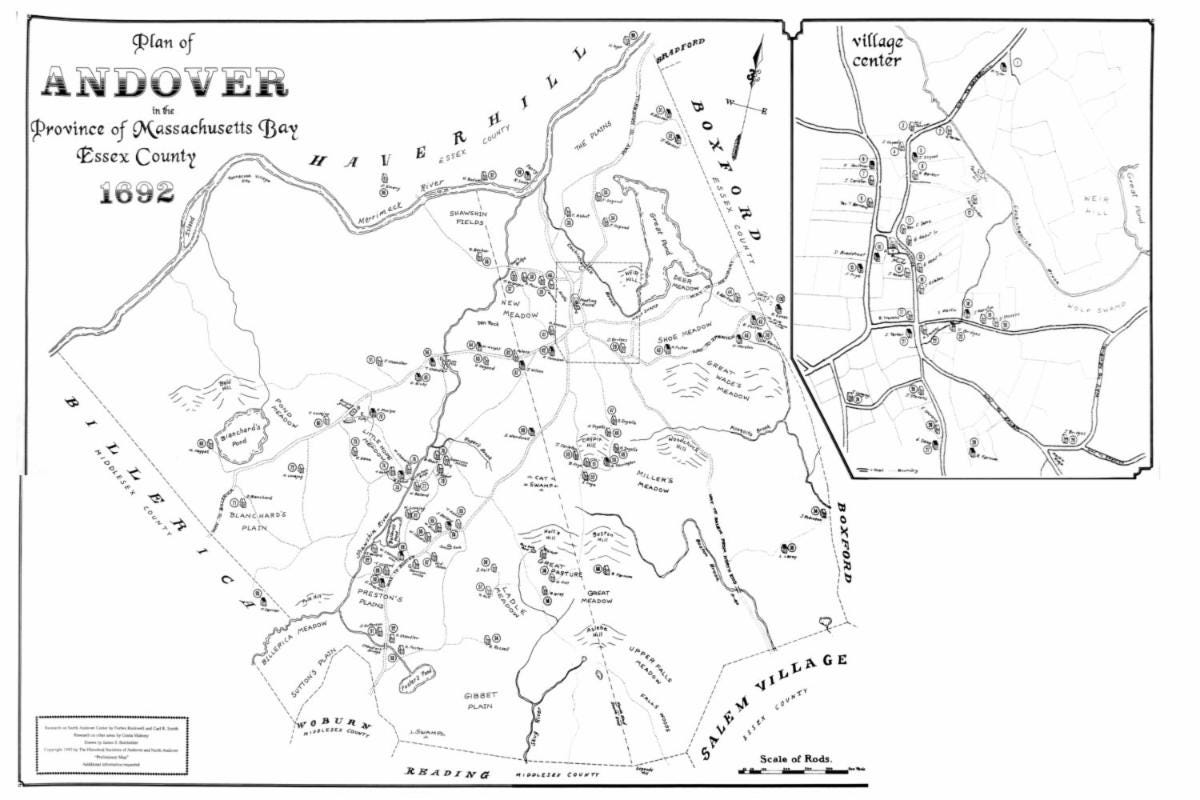Traveling from one town to another in the early days of Andover was not easy.
Travelers often had to open and shut gates as well as worry about the many dangers the area presented, bad roads, streams that were impassable, wild animals, poor weather, and taking wrong turns due to the fact the roads relied on landmarks of trees and stones.
Because of these barriers the journeys were often slow and long. Travelers often required a place to rest and get food.
Many families who had large homes would often take in travelers. These homes were called inns or public houses, and some owners were licensed to sell wines and strong liquors. In 1680 the General Court allowed Andover to have one retailer for wine and liquor out of doors, and two public houses or inns.
William Chandler, a blacksmith, operated an inn on the road from Ipswich to Billerica (later called South Street) and was granted a license in 1686 to sell cider, beer, wine and strong liquor. The sign on William Chandler’s Inn was a horseshoe, likely because he and other family members were blacksmiths.
1683 map of the boundary between Andover and Billerica, ACHC #2019.159.12d
In 1689 John Osgood, who was also an innkeeper on the same road but in area that is now North Andover, took Chandler to court stating that Chandler did not have the license to sell cider or strong drink.
Both Osgood and Chandler were among the original settlers of Andover and each had their own supporters.
The selectman even filed a petition of support for Chandler. Osgood filed a lengthy petition signed by more than a dozen men critical of Chandler and his Horseshoe Inn. However one year after the complaint was filed the court found in favor of Chandler.
The specific details of this dispute can be found in Sarah Loring Bailey’s 1880 book, “Historical Sketches of Andover.”
1692 map of Andover, researched and created jointly by the Andover and North Andover Historical Societies in 1992. Copies of the map are for sale at the History Center.
William Chandler’s Horseshoe Inn was on a road described by Bessie Goldsmith as South Street, and can be found on the 1692 map of Andover.
It appears that the inn was located near the intersection of Woburn Street and Abbot Street near today’s Pomp’s Pond (called Ballard’s Pond in 1692).
A deadly twist of fate
What makes the Chandler's Horseshoe Inn an interesting site is that across the road was the homestead of Widow (Allen) Carrier, where former Billerica resident Martha Carrier lived with her family.
In 1692, William Chandler’s 11-year-old daughter Phebe was one of the first to accuse their neighbor Martha Carrier of witchcraft.
Phebe claimed that Martha caused swelling in her face and hands after hearing Martha’s voice threatening to poison her. Phebe’s parents, William and Bridget agreed with their daughter’s story.
Later William and Bridget had a change of heart and signed a petition in support of Martha Currier. But it was too late for Martha Carrier, who was hanged in Salem August 19,1692.
Another interesting, but less deadly, twist to this story is that rival inn-keeper John Osgood’s wife, Mary, was also accused of witchcraft. After 4 months of imprisonment at Salem, she was released.
Many thanks to guest writer and volunteer Barbara Bunn for researching and writing this Miscellany Mondays story! There's more to come in the story.







